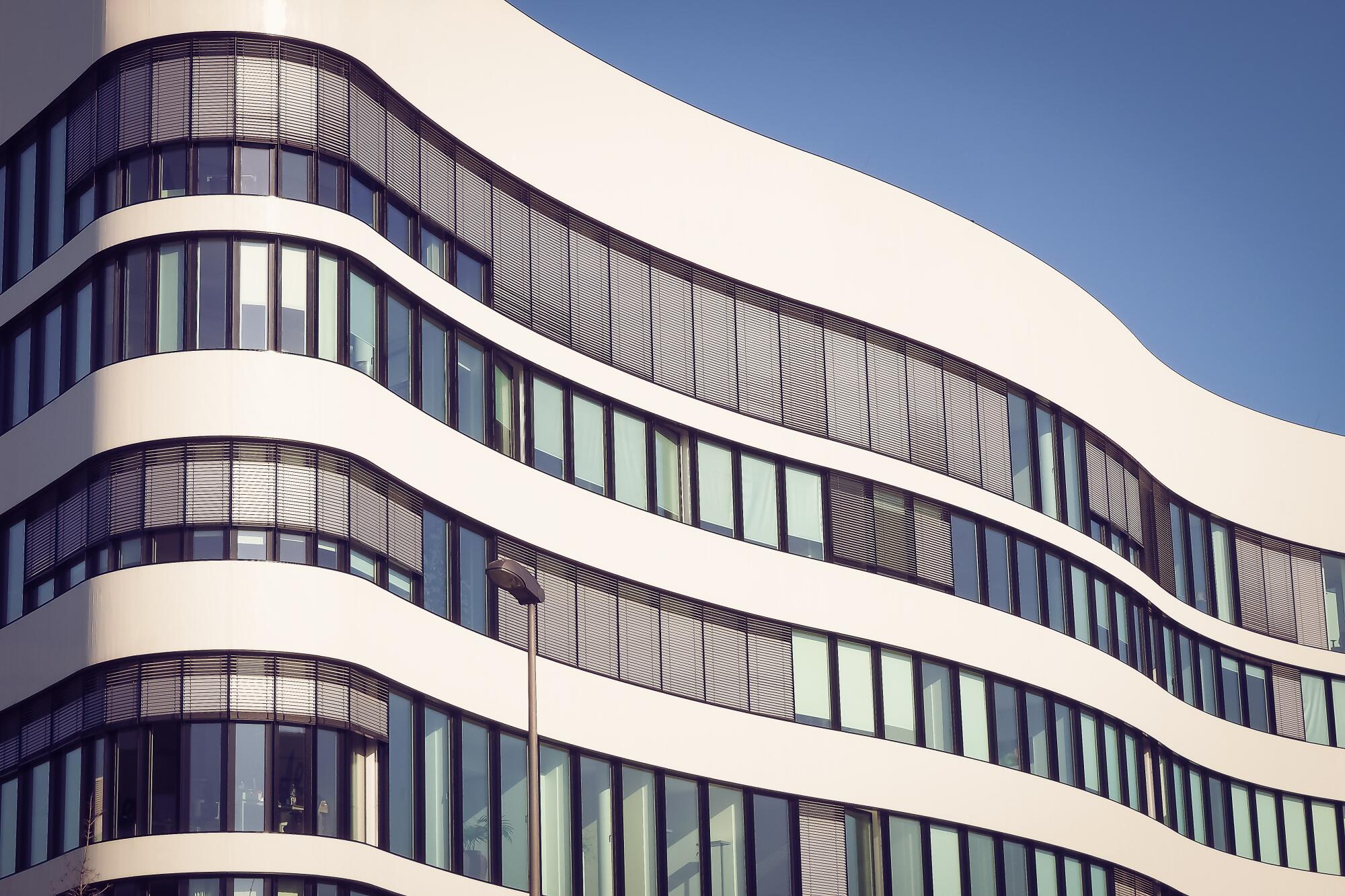In today’s rapidly evolving urban environments, modern commercial buildings have become the backbone of economic growth, sustainability, and innovative design. These structures are not merely places of business; they represent the forefront of architectural innovation, technological advancement, and environmental responsibility. As cities expand and businesses seek efficient, attractive spaces, understanding what defines a modern commercial building is essential for architects, investors, and urban planners alike.
Understanding the Modern Commercial Building
What Is a Modern Commercial Building?
A modern commercial building is a purpose-built structure designed to accommodate commercial activities such as office spaces, retail outlets, hotels, and mixed-use developments. Unlike traditional buildings, they emphasize sustainability, technological integration, flexible spaces, and aesthetic appeal. These buildings embody the latest trends in architecture and engineering, aiming to provide a functional yet environmentally responsible environment.
The Significance in Urban Development
As urban populations surge, modern commercial buildings play a vital role in shaping city skylines and supporting economic vitality. They meet the demand for versatile workspaces, foster innovation hubs, and contribute to sustainable city planning. These structures are integral to building smarter, greener, and more resilient cities.
Characteristics of a Modern Commercial Building
Architectural Design
Sleek and Innovative Aesthetics
Modern commercial architecture favors sleek, minimalist designs that emphasize clean lines and innovative forms. Architects are blending artistic expression with practical considerations to produce buildings that are both eye-catching and functional. For example, the use of curved glass facades or asymmetric shapes enhances visual appeal while optimizing natural light.
Integration of Functionality and Style
Designs are now heavily focused on creating spaces that adapt seamlessly to tenants’ needs, combining modern aesthetics with user-friendly layouts. Multi-use atriums, open-floor plans, and communal areas foster collaboration and flexibility.
Contemporary Materials Utilization
The use of materials such as glass, steel, and reinforced concrete allows for transparency, durability, and innovative structural solutions. These materials support sustainability goals and give buildings a forward-looking appearance.
Sustainability and Eco-Friendliness
Green Building Certifications
Certifications like LEED and BREEAM recognize buildings that meet rigorous environmental standards. Such certifications ensure that modern commercial buildings maximize energy efficiency, water conservation, and indoor environmental quality.
Energy-efficient Systems
High-performance HVAC, lighting, and insulation systems reduce energy consumption. Smart sensors and automation help optimize resource use and minimize waste.
Use of Sustainable Materials
Recycled content, locally sourced materials, and low-impact manufacturing processes are now standard in eco-conscious commercial buildings.
Technology Integration
Smart Building Systems
Internet of Things (IoT) sensors monitor and control lighting, climate, security, and operational performance in real time, improving efficiency and occupant comfort.
Advanced Security Features
Facial recognition, biometric access, and integrated surveillance systems ensure safety while providing seamless access control.
High-Speed Connectivity Infrastructure
Robust fiber optic networks and wireless systems support the digital needs of tenants and visitors, enabling remote work and cloud-based operations.
Key Features of a Modern Commercial Building
Flexible and Adaptive Spaces
Modular Design Elements
Buildings incorporate modular components that can be reconfigured to meet changing tenant requirements without significant structural changes.
Multi-Purpose Areas
Open-plan offices, adaptable conference rooms, and flexible retail spaces allow for diverse uses within the same structure.
Future-Proof Layouts
Designing for scalability and technological upgrades ensures buildings remain relevant over decades.
Environmental Sustainability Measures
Solar Panels and Renewable Energy
Many modern commercial buildings harness solar energy, reducing reliance on fossil fuels and lowering operating costs.
Green Roofs and Walls
Vegetation-covered rooftops improve insulation, reduce heat island effects, and enhance urban biodiversity.
Water Conservation Systems
Rainwater harvesting, low-flow fixtures, and greywater recycling address water scarcity concerns.
Advanced Building Systems
HVAC for Energy Efficiency
Innovative HVAC setups, including geothermal heating and cooling, optimize temperature control with minimal energy use.
Integrated Lighting Controls
Occupancy sensors and daylight-responsive lighting adjust illumination dynamically for comfort and efficiency.
Building Management Systems (BMS)
Centralized control platforms gather data across systems, providing insights for operational excellence.
Aesthetic and Design Trends
Minimalist and Contemporary Styles
Designs favor simplicity, clean lines, and uncluttered spaces that foster productivity and calmness.
Natural Light Utilization
Extensive use of glass and skylights maximize daylight exposure, reducing artificial lighting needs.
Open-Plan Layouts
Encourages collaboration and flexibility, ideal for modern work cultures.
Innovative Technologies Driving Modern Commercial Buildings
Smart Building Technologies
IoT Sensors and Real-time Monitoring
Continuous data collection enhances building performance and predictive maintenance, minimizing downtime.
Automated Climate Control
Smart HVAC systems automatically adjust settings based on occupancy and weather conditions.
Occupancy-based Lighting
Lighting adjusts dynamically, reducing energy waste.
Construction Technologies
Modular and Prefabricated Components
Off-site fabrication accelerates construction timelines and enhances quality control.
3D Printing Applications
Innovative 3D printing techniques produce complex architectural elements and structural components.
Drones and Robotics in Construction
Drones assist in site surveying, while robots perform tasks like bricklaying, improving safety and efficiency.
Building Management and Automation
Centralized Control Systems
Unified platforms enable remote operation and monitoring for optimal performance.
Predictive Maintenance
Data analytics forecast equipment failures before they occur, reducing downtime and costs.
Operational Data Analytics
Analyze operational data to identify efficiencies and optimize resource use.
Advantages of Modern Commercial Buildings
Economic Benefits
Lower Operational Costs
Energy-efficient systems and automation reduce utility bills and maintenance expenses.
Attracting and Retaining Tenants
Modern amenities, aesthetic appeal, and sustainability features make properties desirable.
Higher Property Value
Innovative and eco-friendly buildings typically command premium prices and rents.
Environmental Benefits
Reduced Carbon Footprint
Green technologies and sustainable materials help lower overall emissions.
Regulatory Compliance
Meeting evolving environmental standards avoids penalties and enhances reputation.
Urban Sustainability Contribution
Improved air quality, green spaces, and reduced heat island effects support city health.
User Experience Enhancements
Indoor Air Quality
Advanced filtration systems ensure healthier indoor environments.
Improved Security and Safety
State-of-the-art surveillance and access controls increase safety levels.
User-friendly Interfaces and Convenience
Touchless controls, mobile apps, and personalized environments provide comfort and ease of use.
Challenges and Considerations in Developing Modern Commercial Buildings
High Initial Investment
The advanced technologies and sustainable materials often require significant upfront capital.
Complex Technological Integration
Ensuring compatibility and smooth operation of diverse systems demands expert planning and execution.
Regulatory and Zoning Compliance
Meeting local building codes and environmental regulations can be complex and time-consuming.
Balancing Aesthetics with Sustainability
Design choices must harmonize visual appeal with environmental performance for optimal outcomes.
Notable Examples of Modern Commercial Buildings
Case Study 1: The Edge, Amsterdam
This skyscraper exemplifies sustainability and technological innovation, featuring extensive solar panels and IoT integration to optimize energy use.
Case Study 2: Salesforce Tower, San Francisco
The tallest building in the city, it highlights modern architecture, high-performance systems, and green design elements.
Case Study 3: Marina Bay Sands, Singapore
Known for its iconic design, luxurious facilities, and advanced sustainable features, it signifies the zenith of modern commercial architecture.
Future Trends Shaping the Next Generation of Commercial Buildings
Vertical Urbanism and Sky-high Structures
Tall, mixed-use towers address space constraints while integrating green features at high altitudes.
Renewable Energy Integration
Solar, wind, and other renewable sources will become even more integrated into building designs.
Focus on Health and Wellness
Features like enhanced ventilation, biophilic design, and wellness centers will prioritize occupant health.
Artificial Intelligence in Design and Management
AI-driven tools will optimize building operation, design choices, and predictive maintenance processes.
Conclusion
The evolution of modern commercial buildings reflects a commitment to innovation, sustainability, and enhancing urban life. As technology advances and environmental concerns intensify, these structures are poised to become even smarter, greener, and more adaptable. The future of commercial architecture lies in designs that balance aesthetics, functionality, and ecological responsibility, contributing to resilient and vibrant cities worldwide.
Key Points Summary
| Aspect | Details |
|---|---|
| Architectural Style | Sleek, minimalist, innovative forms with contemporary materials |
| Sustainability | LEED/BREEAM certified, green roofs, solar panels, water systems |
| Technology | IoT, automation, high-speed connectivity, smart systems |
| Design Features | Flexible spaces, open plans, natural light utilization |
| Construction Methods | Prefabrication, modular components, drones, 3D printing |
| Benefits | Cost savings, higher property value, environmental impact reduction, user comfort |
| Challenges | High initial costs, integration complexity, regulatory hurdles |
Frequently Asked Questions (FAQs)
- What defines a modern commercial building? It is a structure designed with the latest advancements in design, sustainability, and technology, intended for commercial activities.
- Why is sustainability important in modern commercial construction? Sustainable buildings reduce environmental impact, lower operating costs, and improve occupant health.
- What are common technologies used in modern commercial buildings? IoT sensors, automated HVAC, smart lighting, Building Management Systems, and renewable energy sources.
- How do modern commercial buildings enhance user experience? Through improved indoor air quality, security, energy efficiency, and adaptable spaces.
- What challenges are faced when building a modern commercial building? High upfront costs, technological complexity, regulatory compliance, and balancing aesthetics with sustainability.
- Can you give examples of groundbreaking modern commercial buildings? Yes. The Edge in Amsterdam, Salesforce Tower in San Francisco, and Marina Bay Sands in Singapore are leading examples.
- What future developments can we expect in commercial architecture? Taller skyscrapers with green technologies, AI-driven management, health-focused designs, and increased renewable energy integration.
Embracing these innovations ensures that modern commercial buildings will continue to shape vibrant, sustainable, and efficient urban landscapes for decades to come. For more insights, consult industry reports from authoritative sources like the U.S. Green Building Council (USGBC) and leading architecture firms.





